
Have you ever walked into a space and instantly felt a sense of calm and tranquility?
- Benefits of Indoor Plants
- Choosing the Right Indoor Plants
- Creating a Green Oasis in Your Home
- Indoor Plant Care Tips
- Styling Your Home with Indoor Plants
- Enhancing Your Wellbeing with Indoor Plants
Have you ever walked into a space and instantly felt a sense of calm and tranquility? Chances are, there were beautiful green plants surrounding you. Indoor plants have the incredible ability to transform any living space, adding a touch of nature and creating a serene atmosphere. Whether you have a small apartment or a spacious home, incorporating indoor plants into your decor can bring life and beauty to any room.
Indoor plants not only enhance the aesthetic appeal of your living space but also offer a range of health benefits. They purify the air by absorbing harmful pollutants and releasing fresh oxygen, making the environment healthier for you and your family. Additionally, plants have been shown to reduce stress levels, improve concentration and productivity, and enhance overall well-being. With all these benefits in mind, it’s no wonder that indoor plants have become increasingly popular in homes and offices alike.
When it comes to choosing the best indoor plants for your living space, there are countless options to consider. From low-maintenance succulents to vibrant flowering plants, there is a plant to suit every style and preference. Whether you have a green thumb or are a newbie to plant care, there are options that will thrive in your home.
One of the most popular indoor plants is the peace lily. With its glossy green leaves and elegant white flowers, this plant adds a touch of elegance to any room. What sets the peace lily apart is its ability to thrive in low light conditions, making it perfect for those spaces that may not receive direct sunlight. Its air-purifying properties also make it a great addition to bedrooms, helping to create a calming and restful environment.
If you’re looking to add a pop of color to your living space, consider the vibrant and beautiful African violet. With its striking purple flowers and velvety leaves, this plant is sure to make a statement. African violets are relatively low maintenance and can thrive in bright, indirect light. They are perfect for adding a burst of color to a windowsill or tabletop.
For those looking for a unique and eye-catching plant, the snake plant is an excellent choice. With its tall leaves and distinctive pattern, the snake plant adds a touch of drama to any room. What makes this plant so appealing is its ability to purify the air by absorbing toxins such as formaldehyde and benzene. This makes it a perfect addition to bedrooms, living rooms, or even home offices.
If you’re limited on space but still want to enjoy the benefits of indoor plants, consider hanging plants such as spider plants or pothos. These trailing plants can be hung from the ceiling or placed on high shelves to add visual interest and greenery to your living space without taking up valuable floor space. They are also relatively easy to care for and can thrive in a variety of lighting conditions.
No matter which indoor plants you choose, it’s important to provide them with the proper care and conditions to thrive. This includes providing adequate light, watering them appropriately, and occasionally fertilizing them. Each plant has its own specific requirements, so be sure to do your research and understand the needs of your chosen plants.
Transforming your living space with indoor plants is not only aesthetically pleasing but also beneficial for your health and well-being. Whether you prefer lush foliage or vibrant flowers, there is a plant to suit your style and bring life to your home. By incorporating indoor plants into your decor, you can create a peaceful and inviting space that you’ll never want to leave. So go ahead, bring the beauty of nature inside and experience the transformative power of indoor plants.
Benefits of Indoor Plants
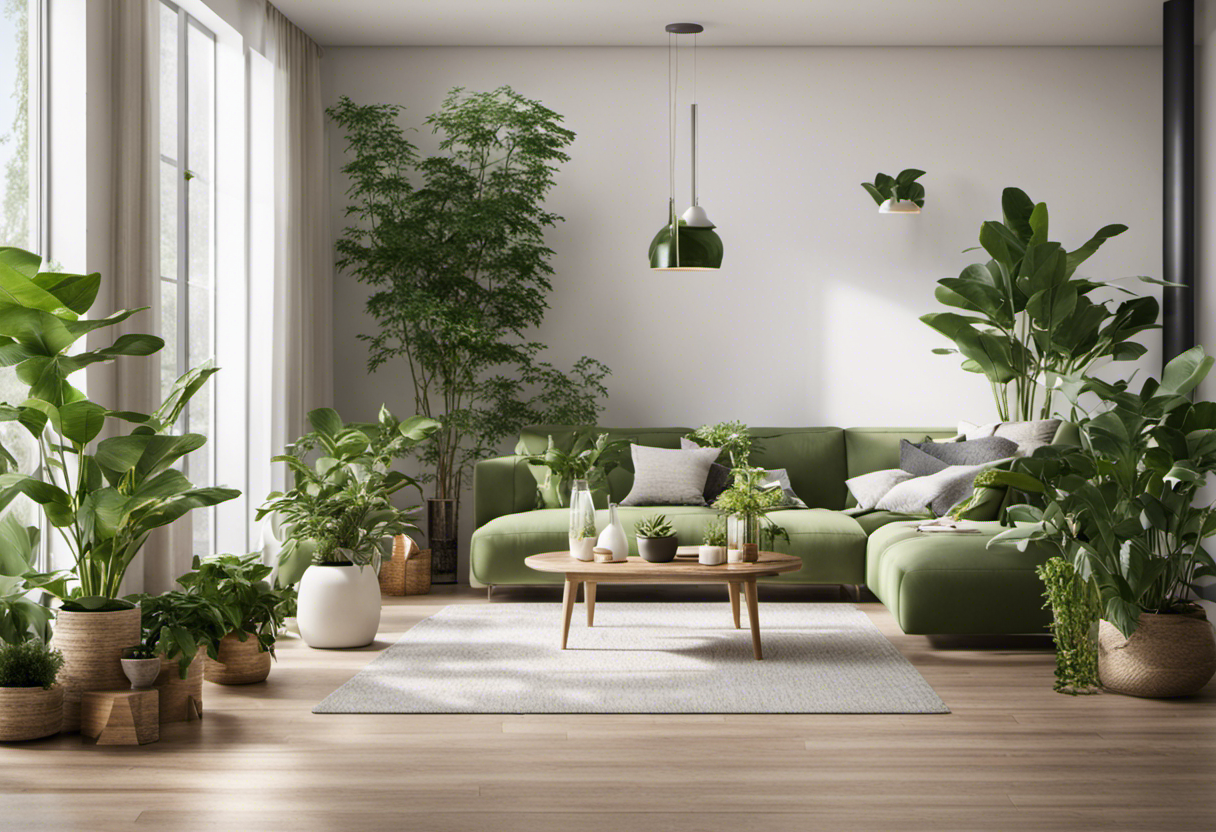
Indoor plants not only add aesthetic appeal to your living space but also provide numerous benefits for your overall well-being. Here are some of the key advantages of having indoor plants in your home:
-
Improved Air Quality: Indoor plants are natural air purifiers. They absorb carbon dioxide and release oxygen through the process of photosynthesis, which helps to freshen the air indoors. Additionally, certain plants, such as spider plants and peace lilies, can help remove toxins like formaldehyde, benzene, and ammonia from the air, making it cleaner and healthier for you to breathe.
-
Increased Productivity: Studies have shown that the presence of indoor plants in offices and workspaces can significantly enhance productivity and concentration levels. The greenery and natural elements help reduce stress, boost mood, and improve cognitive function. Introducing plants in your home office or study area can have the same positive effects, allowing you to be more efficient and focused.
-
Stress Reduction: Indoor plants have a calming effect on our mental state. Being surrounded by nature, even indoors, can help reduce stress levels and promote relaxation. The presence of indoor plants has been found to lower blood pressure, reduce anxiety, and improve overall well-being. Incorporating plants into your living space can create a peaceful and serene environment, allowing you to unwind and de-stress after a long day.
-
Enhanced Indoor Climate: In addition to improving air quality, indoor plants can also help regulate humidity levels. They release moisture into the air through a process known as transpiration, which can be beneficial in dry indoor environments, especially during winter months when heaters tend to dry out the air. This natural humidification can prevent dry skin, reduce respiratory problems, and enhance comfort in your living space.
-
Noise Reduction: Indoor plants can act as natural sound absorbers, helping to reduce noise levels in your home. The leaves and branches of plants can absorb, diffract, and reflect sound waves, thereby reducing echoes and diminishing background noise. Placing larger, bushier plants or clusters of plants near windows or in open areas can effectively absorb and muffle outside sounds, creating a quieter and more peaceful living environment.
-
Improved Mental Health: Indoor plants have been linked to improved mental health and overall happiness. Their presence can boost mood and provide a sense of well-being. Taking care of plants and watching them grow can be a therapeutic and fulfilling experience, promoting a sense of responsibility and nurturing. Indoor gardening can also serve as a form of relaxation and a creative outlet, allowing you to connect with nature and find solace in tending to your plants.
Incorporating indoor plants into your living space offers numerous benefits, from cleaner air and increased productivity to stress reduction and improved mental health. By selecting the right plants for your home and providing them with proper care, you can transform your living space into a green oasis that enhances both your physical and emotional well-being.
Choosing the Right Indoor Plants
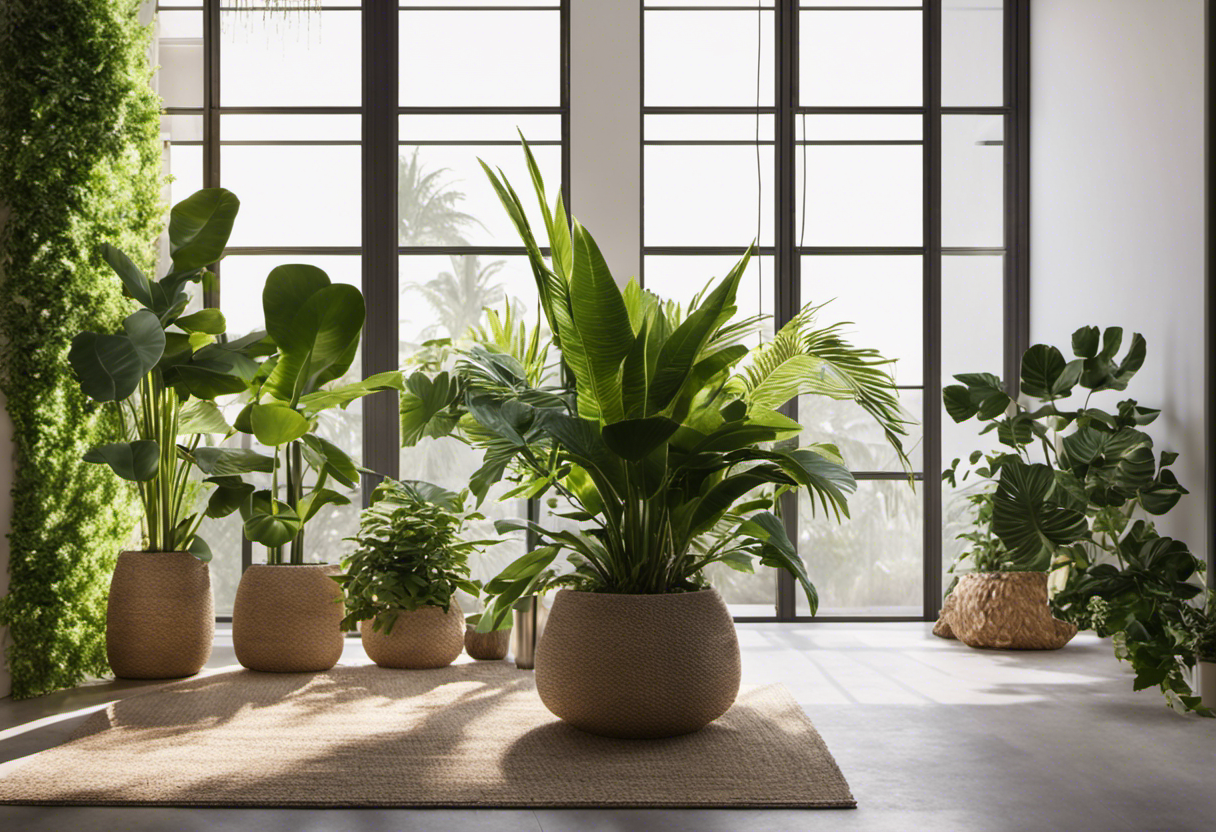
When it comes to transforming your living space with indoor plants, choosing the right ones is crucial. Not all plants thrive indoors, so it’s important to select varieties that can adapt to the conditions of your home or office. Here are some factors to consider when choosing the best indoor plants for your space:
-
Light requirements: Different plants have different light requirements. Some plants, like succulents and cacti, thrive in bright, direct sunlight, while others prefer indirect or low light conditions. Assess the lighting in your space and choose plants that will thrive in that environment. If you have limited natural light, you can opt for plants that can tolerate lower light levels, such as snake plants or ZZ plants.
-
Maintenance: Consider the level of care and attention you are willing to provide. Some plants require more frequent watering, while others can go for extended periods without water. If you have a busy lifestyle or are a beginner in plant care, choosing low-maintenance plants like pothos or spider plants can be a good option.
-
Size: Consider the available space in your home or office. Some indoor plants can grow quite tall or spread out significantly. If you have limited floor space, you may want to choose smaller or compact plants, such as peace lilies or ferns.
-
Air purifying qualities: Certain indoor plants have the ability to purify the air by removing toxins and improving indoor air quality. If you’re concerned about air pollution or have allergies, selecting plants with air purifying qualities, such as Boston ferns or spider plants, can be beneficial.
-
Aesthetic appeal: Indoor plants can also be used to enhance the aesthetic appeal of your living space. Consider the overall decor and style of your home or office and choose plants that complement it. There is a wide range of indoor plants available in different shapes, sizes, and colors, so you can find ones that fit your personal style and taste.
-
Toxicity: If you have pets or small children, it’s important to consider the toxicity of the plants you choose. Some indoor plants can be poisonous if ingested, so make sure to research the toxicity levels of any plants you bring into your home and keep them out of reach of children and pets.
Remember to do your research and consult with a local plant expert or nursery to ensure you choose the best indoor plants for your specific environment and needs. With the right selection, you can bring the beauty and benefits of nature indoors and transform your living space into a green oasis.
“Choosing the right indoor plants requires considering factors such as light requirements, maintenance, size, air-purifying qualities, aesthetic appeal, and toxicity. Consulting with a plant expert or nursery can help ensure the best selection for your specific needs.”
Creating a Green Oasis in Your Home
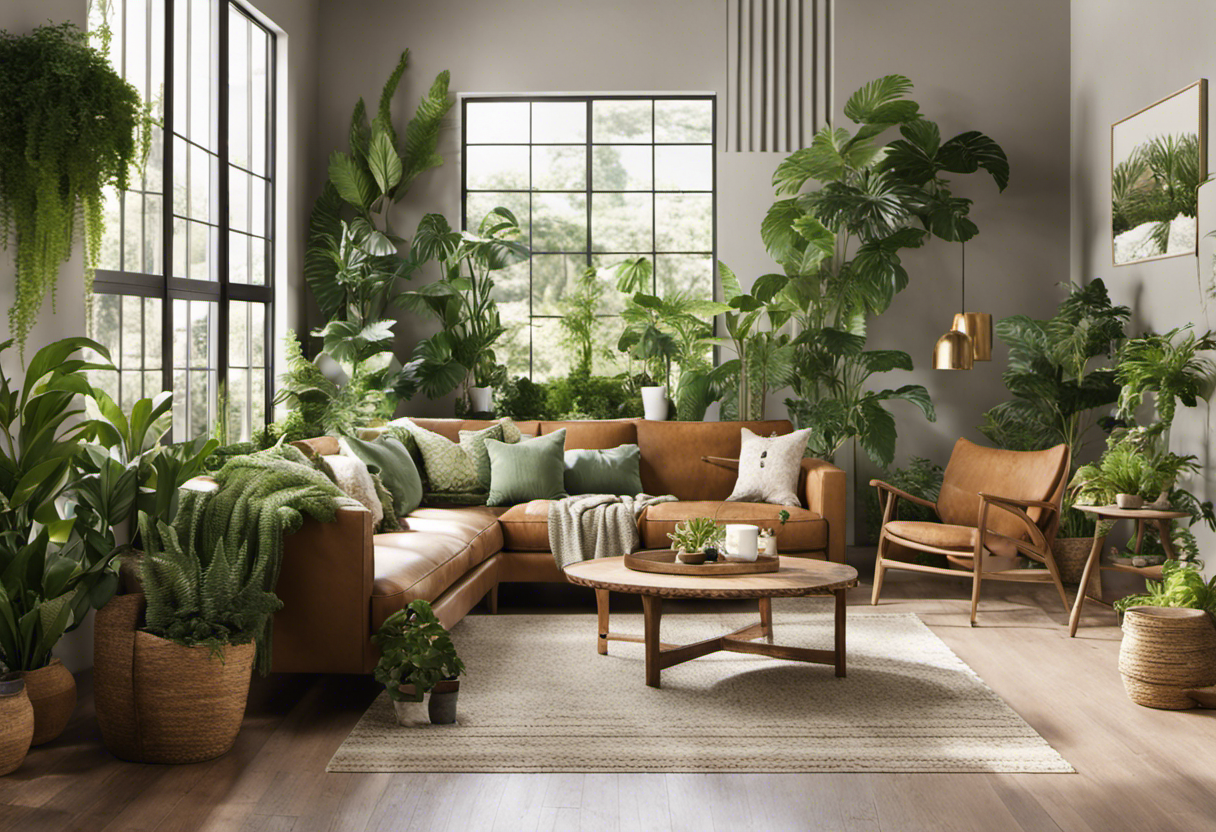
Creating a green oasis in your home is a wonderful way to bring nature indoors and enhance the overall ambiance of your living space. Indoor plants not only add beauty and vibrancy to your home but also provide numerous health benefits. They purify the air by removing toxins and release oxygen, creating a fresh and healthy environment. Whether you have a small apartment or a spacious house, there are indoor plants suited for every space and level of gardening expertise.
Choosing the Right Plants
Before you start transforming your living space with indoor plants, it’s essential to choose the right plants that will thrive in your home. Consider factors such as lighting conditions, temperature, and humidity when selecting indoor plants. Some popular choices include:
-
Snake Plant (Sansevieria): Ideal for beginners, snake plants tolerate a wide range of lighting conditions and can survive with minimal care. They have long, narrow leaves that add a touch of elegance to any room.
-
Peace Lily (Spathiphyllum): Known for its beautiful white flowers, the peace lily is an excellent choice for low-light areas. It also helps to improve air quality by removing toxins like formaldehyde and benzene.
-
Spider Plant (Chlorophytum comosum): This plant is cherished for its long arching foliage that resembles spider legs. It thrives in bright, indirect sunlight and requires occasional watering. Spider plants are also known for their air-purifying qualities.
-
ZZ Plant (Zamioculcas zamiifolia): If you have limited natural light, the ZZ plant is a great option. Its shiny, dark green leaves make it a visually appealing plant that is easy to care for.
-
Pothos (Epipremnum aureum): Pothos is a versatile plant that can tolerate different lighting conditions. It has cascading vines with heart-shaped leaves, making it perfect for hanging baskets or trailing down shelves.
Caring for Your Indoor Plants
Once you have chosen the right plants for your home, it’s important to provide them with proper care to ensure their growth and longevity. Here are some essential care tips:
-
Watering: Different plants have different water needs. Ensure you are watering your indoor plants appropriately. Overwatering can lead to root rot, while underwatering can cause wilting. Check the soil moisture regularly and water accordingly.
-
Lighting: Place your plants in locations that receive the appropriate amount of light. Some plants thrive in bright, indirect sunlight, while others prefer low-light conditions. Adjust the positioning based on the specific light requirements of each plant.
-
Temperature and Humidity: Most indoor plants prefer temperatures between 60-75°F (15-24°C). Maintain consistent humidity levels by misting the leaves or placing the plants on trays filled with water and pebbles.
-
Fertilizing: Indoor plants benefit from occasional fertilization during the growing season. Use a balanced liquid fertilizer diluted to half the recommended strength once a month to provide necessary nutrients.
Decorating with Indoor Plants
Indoor plants not only have health benefits but can also add a touch of style to your living space. Here are some creative ways to incorporate indoor plants into your home decor:
-
Vertical Gardens: Create a stunning living wall by hanging small potted plants on a vertical trellis or using wall-mounted planters.
-
Terrariums: Enclose small plants in glass containers to create miniature ecosystems that bring a unique charm to your home.
-
Hanging Baskets: Hang plants from the ceiling or hooks for a visually appealing display, especially in areas with limited floor space.
-
Plant Stands: Elevate your plants with stylish plant stands, which not only showcase the plants but also add dimension to the room.
-
Grouping: Arrange a collection of plants together to create a lush and visually captivating display on a tabletop or shelf.
By choosing the right plants, providing proper care, and considering creative ways to display them, you can create a green oasis in your home that will elevate the overall aesthetics and bring a sense of tranquility and well-being. So, go ahead and introduce some indoor plants into your living space and enjoy the numerous benefits they offer.
Indoor Plant Care Tips
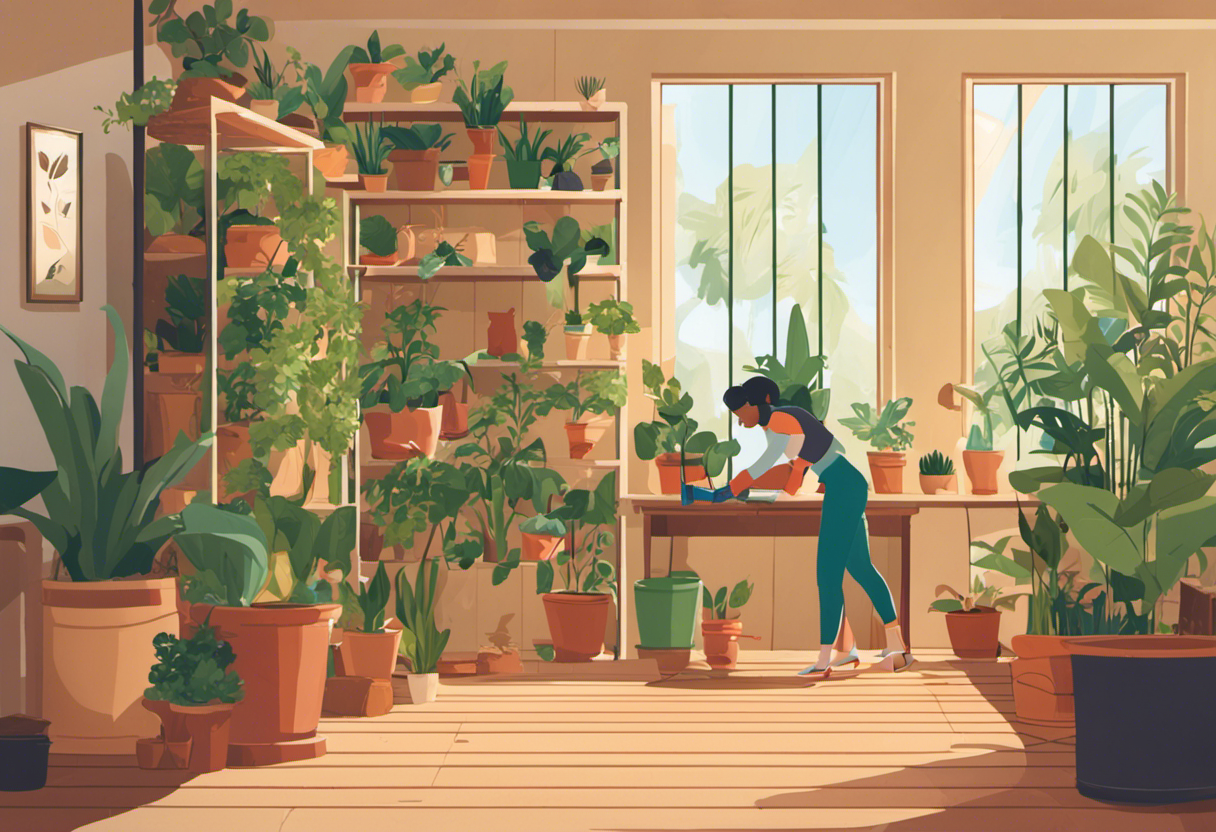
Taking care of indoor plants requires some basic knowledge and a little effort. Here are some essential tips to ensure the health and longevity of your indoor plants:
-
Lighting: Different indoor plants have different lighting requirements. Place your plants near windows or in areas that receive adequate natural light. However, be cautious not to expose them to direct sunlight, as it can burn their leaves. If natural light is limited, you can also use artificial grow lights to supplement the light needs of your plants.
-
Watering: The key to successful plant care is finding the right balance of watering. Overwatering can lead to root rot, while underwatering can cause wilting and damage to the plant. Check the soil moisture level by inserting a finger about an inch deep into the soil. If it feels dry, it’s time to water. Avoid standing water in the pot as it can promote the growth of mold or fungus. When watering, aim to moisten the entire root ball evenly.
-
Humidity: Most indoor plants thrive in environments with moderate humidity levels. To increase humidity, you can mist your plants regularly or place a tray filled with water near them. Another option is to use a humidifier to maintain the ideal humidity level. Be cautious of over-misting, as excessive moisture can lead to the development of fungal diseases.
-
Temperature: Indoor plants generally prefer temperatures similar to those we find comfortable. However, it’s important to be mindful of extreme temperature changes. Avoid placing plants near drafty windows, vents, or extreme heat sources such as radiators. Sudden temperature fluctuations can stress the plants and affect their growth.
-
Fertilization: Indoor plants require nutrients to thrive. Use a balanced, water-soluble fertilizer formulated specifically for houseplants. Follow the instructions on the fertilizer packaging to determine the appropriate dosage and frequency. Over-fertilization can cause damage to the plant, so it’s better to err on the side of caution.
-
Pruning: Regular pruning helps maintain the shape and appearance of your indoor plants. Cut back overgrown branches and remove dead leaves or flowers. Pruning also promotes new growth and keeps the plant healthy. Use clean, sharp pruning tools to minimize the risk of spreading diseases to your plants.
-
Pest control: Keep a watchful eye for common indoor plant pests such as spider mites, aphids, and mealybugs. If you notice any signs of infestation, act promptly to prevent them from spreading. Use insecticidal soap or organic pest control methods to eliminate the pests. Quarantining new plants for a few weeks before introducing them to your existing collection can also help prevent the spread of pests.
-
Rotation: Rotate your plants every few weeks to ensure even growth. This prevents the plants from leaning or growing in one direction toward the light source. Rotating the plants also helps ensure that all sides receive sufficient light, preventing spindly growth.
By following these indoor plant care tips, you can create a thriving indoor oasis that not only adds beauty to your living space but also improves air quality and enhances your overall well-being. Take the time to understand the specific needs of each plant and provide them with the care they require. With proper attention, your indoor plants will flourish and bring joy to your home for years to come.
Styling Your Home with Indoor Plants
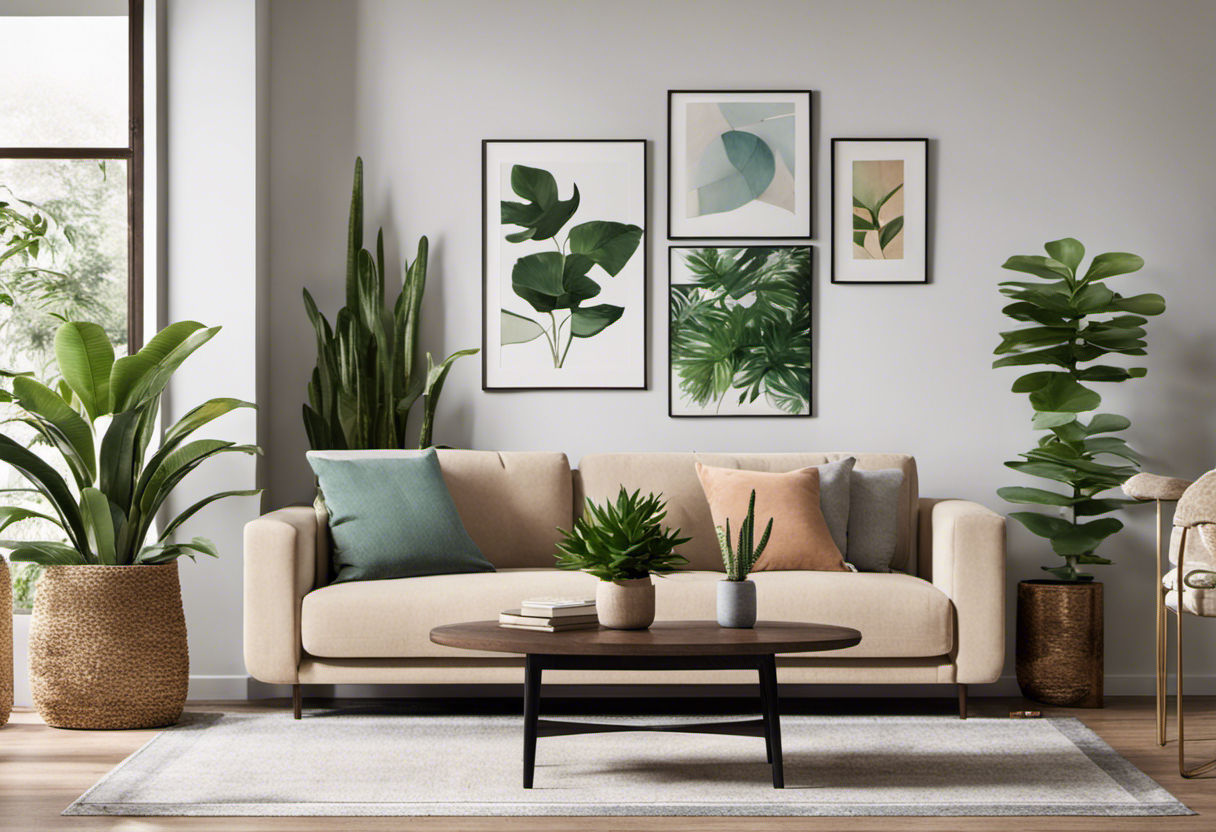
Indoor plants not only bring natural beauty and freshness into your living space but also have the ability to enhance the overall aesthetics and style of your home. Whether you have a minimalist, modern, or traditional decor, there are indoor plants that can complement any style. Here are some tips on how to style your home with indoor plants.
1. Choose the Right Plants: When it comes to styling your home with indoor plants, it’s important to choose plants that not only suit your personal taste but also thrive in the conditions of your home. Consider factors such as lighting, humidity, and temperature. Some popular indoor plants that are easy to care for and work well in a variety of spaces include pothos, snake plant, zz plant, and peace lily.
2. Grouping and Placement: To create a visually pleasing display, consider grouping your indoor plants together. This can be done by placing a variety of plants on a shelf or creating a cluster of plants on a side table. Grouping plants of different heights, textures, and colors adds visual interest and creates a focal point in the room. Additionally, consider the placement of your plants in relation to other decor elements in the room, such as furniture, artwork, or lighting fixtures.
3. Using Planters and Pots: The choice of planters and pots can also contribute to the overall style of your home. Consider using unique and stylish pots that complement the decor of your space. Ceramic pots, woven baskets, or sleek and modern planters can add a touch of sophistication. Don’t be afraid to experiment with different materials, shapes, and colors to create a cohesive and stylish look.
4. Incorporate Hanging Plants: Hanging plants can be a great way to add vertical dimension and visual interest to your home. They are especially useful in small spaces or rooms with limited floor space. Choose trailing plants, such as pothos or ivy, and hang them in decorative plant hangers or macrame plant holders. Hanging plants can be placed near windows, in corners, or above furniture to create eye-catching displays.
5. Create a Green Corner: Designate a specific area in your home as a dedicated green corner. This can be a space on a windowsill, a plant shelf, or a small corner table. Arrange a variety of plants in different sizes and shapes to create a mini indoor garden. Add decorative elements such as fairy lights, decorative stones, or plant-inspired artwork to enhance the visual appeal of your green corner.
6. Consider Scale and Proportion: When styling your home with indoor plants, it’s important to consider the scale and proportion of the plants in relation to the size of the room and its furnishings. Large plants, such as fiddle leaf fig or monstera, can make a bold statement in a spacious living room, while smaller plants work well in bedrooms, bathrooms, or kitchen countertops.
7. Care and Maintenance: To ensure that your indoor plants continue to enhance the style of your home, it’s important to take proper care of them. This includes providing the right amount of light, water, and humidity, as well as regular cleaning and pruning. Keep an eye out for pest infestations or signs of nutrient deficiencies. Proper care and maintenance will not only keep your plants healthy but also ensure that they remain vibrant and beautiful as part of your home decor.
By incorporating indoor plants into your home decor, you can create a stylish and inviting living space that is both visually appealing and beneficial for your well-being. Whether you opt for a minimalist display or a lush indoor garden, indoor plants have the ability to transform your home into a peaceful and rejuvenating sanctuary.
Enhancing Your Wellbeing with Indoor Plants
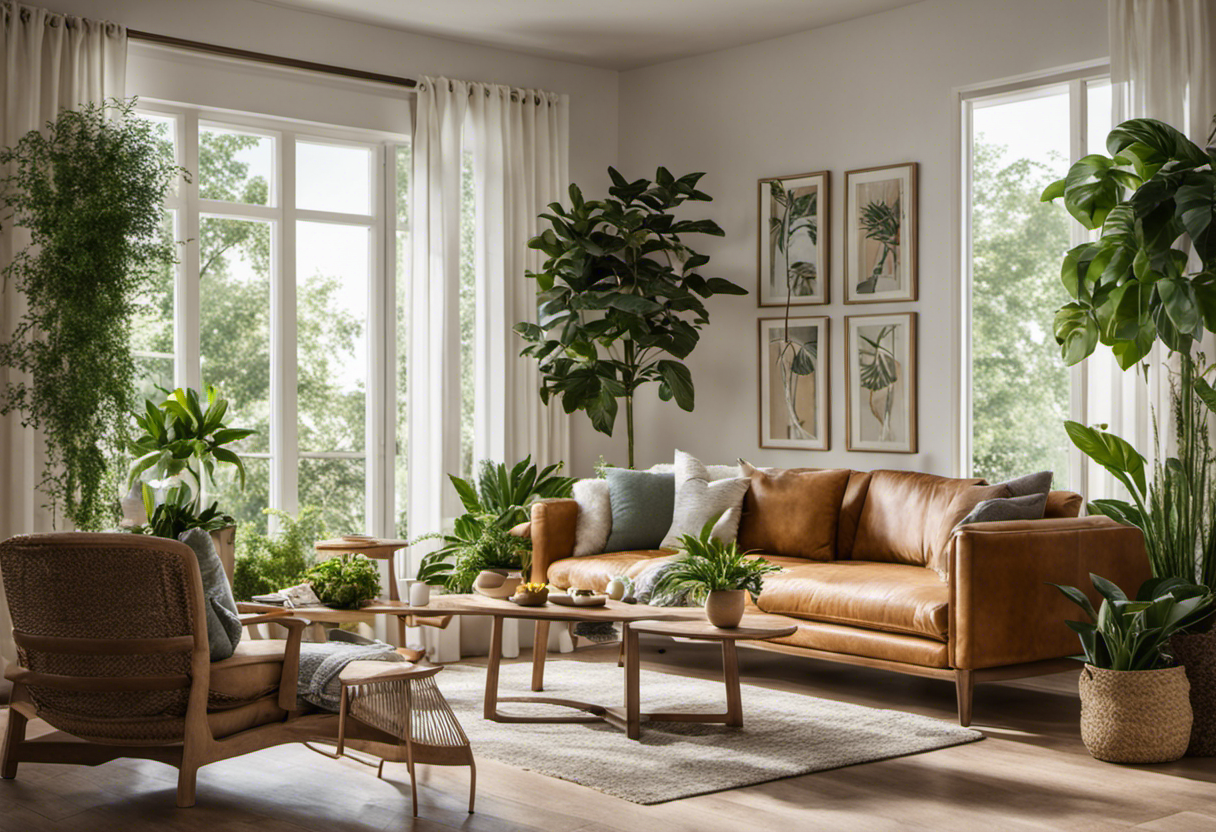
Indoor plants not only add beauty and vibrancy to your living space but also have numerous benefits for your overall wellbeing. These green companions have been proven to improve air quality, reduce stress, boost mood, increase productivity, and even promote better sleep. By incorporating indoor plants into your home or office, you can create a healthier and happier environment for yourself and those around you.
-
Cleaner air: One of the most notable benefits of indoor plants is their ability to improve air quality. Plants are natural air purifiers, filtering out pollutants and releasing fresh oxygen. Through a process called photosynthesis, they absorb carbon dioxide and release clean oxygen, leading to cleaner and fresher indoor air. This can help reduce the risk of respiratory ailments, allergies, and other health issues caused by poor air quality.
-
Stress reduction: Indoor plants have a calming effect on our minds and bodies, helping to reduce stress and anxiety. Studies have shown that being in the presence of plants can lower blood pressure, heart rate, and cortisol levels - the hormone associated with stress. The soothing greenery and natural beauty of indoor plants provide a sense of tranquility and can create a peaceful atmosphere in your living space.
-
Mood booster: Bringing nature indoors has a positive impact on our mood and mental well-being. Exposure to indoor plants has been linked to improved mood, increased feelings of happiness, and reduced feelings of depression. Looking after plants and watching them grow can also provide a sense of purpose and fulfilment, giving us a sense of accomplishment and joy.
-
Increased productivity: Indoor plants can enhance productivity and concentration, making them a valuable addition to your workspace. Studies have shown that having plants around can improve focus, cognitive function, and creativity. The presence of greenery in the office or study area can create a more pleasant and stimulating environment, helping you stay motivated and productive.
-
Better sleep: Some indoor plants have the ability to improve the quality of our sleep. Plants such as lavender and snake plant release soothing scents and increase the humidity in the air, creating a more relaxing atmosphere in the bedroom. These plants can help to promote a sense of calm and aid in falling asleep faster and achieving a more restful sleep.
Incorporating indoor plants into your living space is a simple and effective way to enhance your overall wellbeing. Whether you choose to place a few potted plants around your home, create a lush indoor garden, or add a statement plant as a focal point, the benefits are worth it. Not only will your space look more beautiful and inviting, but you will also reap the health benefits that these green companions offer.
So go ahead, explore the countless varieties of indoor plants available, and transform your living space into a sanctuary of tranquility and wellness.
